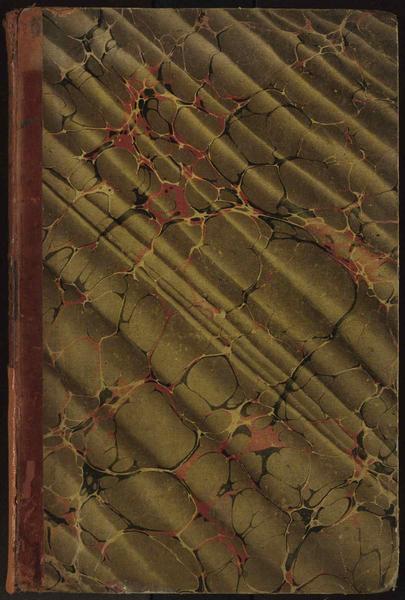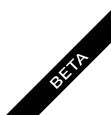 1
1title: Brief Principles of the Arabic Language
artist: Guadagnoli, Filippo, 1596-1656
date: 1642
medium: ru 1=Книги fr 1=Livres en 1=Books zh 1=图书 pt 1=Livros ar 1=كتب es 1=Libros
dimensions: en 1=362 pages ; 32 centimeters
current location: ru|1=Национальная библиотека Катара fr|1=Bibliothèque nationale du Qatar en|1=Qatar National Library zh|1=卡塔尔国家图书馆 pt|1=Biblioteca Nacional do Catar ar|1=مكتبة قطر الوطنية es|1=Biblioteca Nacional de Catar
description: Philippo Guadagnoli (1596–1656) was a Franciscan priest and Italian orientalist. A native of Magliano in the province of Tuscany, he joined the Franciscan order in 1612 and devoted himself to studying arabic and other languages of the Middle East. He served as professor of arabic and Aramaic at Università “La Sapienza” in Rome. His writings include an arabic translation of the Bible (said to have taken him 27 years to complete) and a polemical work entitled Apologia pro Religione Christiana (In defense of the Christian religion), published in Rome in 1649. Breves Arabicae Linguae Institutiones (Brief principles of the arabic language) is a study of arabic grammar. Guadagnoli mentions the didactic poem al-Qasīdah al-Khazrajī by Ḍiyāʾ al-Dīn Abū Muḥammad al-Khazraj̲ī, which contains the author’s encapsulation of the principles of arabic metrics, thus introducing this important work to Western audiences. Guadagnoli dedicated this work to Cardinal Antonio Barberini (1607–71), a patron of the arts and a member of the prominent Barberini family. It was apparently submitted for publication in 1640, at the church of San Lorenzo, in Lucina, Rome, but it was not published until 1642.
arabic language; Grammarlicense:Public domain
 2
2title: The Burdah Poem
artist: Al-Busiri, Sharaf al-Dīn Muḥammad (1213-1294)
date: between 1600 and 1700
medium: ru 1=Рукописи fr 1=Manuscrits en 1=Manuscripts zh 1=手稿 pt 1=Manuscritos ar 1=مخطوطات es 1=Manuscritos
dimensions: en 1=25 x 16 centimeters. Cream, glazed paper for main panel; multi-colored paper for inlaid margins, which are decorated with floral and geometrical designs, the latter in the form of stamp-like pendants
current location: ru|1=Музей искусства Уолтерса fr|1=Musée des arts Walters en|1=Walters Art Museum zh|1=沃尔特斯艺术博物馆 pt|1=Museu de Arte Walters ar|1=متحف والترز الفني es|1=Museo de Arte Walters
description: This illuminated small codex contains a famous poem in honor of the Prophet Muhammad popularly known as “Qaṣīdat al-Burdah” (The poem of the mantle), which was composed by Sharaf al-Dīn Muḥammad al-Būṣīrī (died 694 AH [1294 CE]). This copy was executed in a variety of scripts, probably in Iran, by Ḥabīb Allāh ibn Dūst Muḥammad al-Khwārizmī in the 11th century AH (17th century CE). The first page (folio 1b) of the manuscript features an illuminated rectangular headpiece with five inner panels of text executed in the following scripts: muhaqqaq (gold), naskh (black), thuluth (blue), naskh (black), and muhaqqaq (gold). Muhaqqaq, naskh, and thuluth are three of the six scripts collectively known as the Six Pens. Perfected between the 10th and 13th centuries, the Six Pens are the classical script styles that influenced later generations of calligraphers, up to the present day. The final illuminated page (folio 23a) in the codex contains the colophon, which gives the name of the scribe as Ḥabīb Allāh ibn Dūst Muḥammad. The colophon is written in riqa script, defined by fluid lines. Riqa was commonly used for chancellery documents and for colophons.
arabic calligraphy; arabic poetry; Codex; Illuminations; Islamic manuscripts; Poetrylicense:Public domain
 3
3title: Anonymous Arabic and Persian Poetic Verses
artist: unknown
date: between 1500 and 1599
medium: ru 1=Рукописи fr 1=Manuscrits en 1=Manuscripts zh 1=手稿 pt 1=Manuscritos ar 1=مخطوطات es 1=Manuscritos
dimensions: en 1=27.5 x 38.9 centimeters
current location: ru|1=Библиотека Конгресса fr|1=Bibliothèque du Congrès en|1=Library of Congress zh|1=国会图书馆 pt|1=Biblioteca do Congresso ar|1=مكتبة الكونغرس es|1=Biblioteca del Congreso
description: This fragment contains an arabic poem in eight verses in the center panel and Persian poetical verses in small rectangular registers arranged around the central panel and pasted above a light blue background. The arabic poem stresses Muhammad’s ability to provide intercession for his community on the Day of Judgment. It is a kind of praise or request directed towards the Prophet that is seen in a number of other calligraphic panels meant either for public display or included in albums of calligraphies. The arabic and Persian verses are executed in nasta'liq script, also known as ta'liq (in Turkey) and Farsi (in Arab lands). The term nasta'liq, which combines naskh (cursive) and ta'liq (hanging), refers to a blend of the two scripts believed to have been invented by the 14th-century Persian calligrapher Mir 'Ali Tabrizi. This fragment may have been produced in Persia in the 16th century. The central sheet of calligraphy consists of brown paper sprinkled with fine gold dust and contains five rough squares of gold leaf. The calligraphy panels are separated by gold lines outlined in black, forming rectangular frames for the arabic verses. Around the central panel appears a pink border with floral designs executed in gold, with a light blue border with the 28 panels of Persian verses interlaced with gold vine designs. These calligraphic sheets are all glued onto a tan laminated paper decorated with gold-painted flowers, birds, and plants.
arabic calligraphy; arabic poetry; Illuminations; Islamic calligraphy; Islamic manuscripts; Judgment Daylicense:Public domain
 4
4title: Lines from “Qaṣīdat al-burdah” (the Poem of the Mantle)
artist: Shirazi, Vassal-i, died 1846
date: 1842
medium: ru 1=Рукописи fr 1=Manuscrits en 1=Manuscripts zh 1=手稿 pt 1=Manuscritos ar 1=مخطوطات es 1=Manuscritos
dimensions: en 1=10.2 x 17.7 centimeters
current location: ru|1=Библиотека Конгресса fr|1=Bibliothèque du Congrès en|1=Library of Congress zh|1=国会图书馆 pt|1=Biblioteca do Congresso ar|1=مكتبة الكونغرس es|1=Biblioteca del Congreso
description: This fragment includes a poem in arabic written in black Naskh script on a beige paper. The words are fully vocalized in black and framed by cloud bands on a gold background. The text panel is framed in blue and pasted to a larger sheet of green paper backed by cardboard. On the final line, the calligrapher Vassal states that he has written the work on a Monday night during the year 1258 AH/1842. The calligrapher can be identified as the famous Naskh-revivalist Vassal-i Shirazi (died 1262 AH/1846), the greatest Iranian calligrapher of the 19th century. He seems to have executed this piece only four years before his death.
arabic calligraphy; arabic manuscripts; arabic poetry; Illuminations; Poetrylicense:Public domain
 5
5title: Poem
artist: al-Mukhtār ibn Aḥmad ibn Abī Bakr al-Kuntī al-Kabīr, Sayyid
date: between 1500 and 1900
medium: ru 1=Рукописи fr 1=Manuscrits en 1=Manuscripts zh 1=手稿 pt 1=Manuscritos ar 1=مخطوطات es 1=Manuscritos
current location: ru|1=Мемориальная библиотека Мамма Хайдара fr|1=Bibliothèque commémorative Mamma Haidara en|1=Mamma Haidara Commemorative Library zh|1=海达拉家族纪念图书馆 pt|1=Biblioteca Comemorativa Mamma Haidara ar|1=مكتبة ماما حيدرة التذكارية es|1=Colección Conmemorativa Mamma Haidara
description: Timbuktu (present-day Tombouctou in Mali), founded around 1100 as a commercial center for trade across the Sahara Desert, was also an important seat of Islamic learning from the 14th century onward. The libraries there contain many important manuscripts, in different styles of arabic scripts, which were written and copied by Timbuktu’s scribes and scholars. These works constitute the city’s most famous and long-lasting contribution to Islamic and world civilization. In Qasīdah (poem), Sayyid al-Mukhtār ibn Aḥmad ibn Abī Bakr al-Kuntī al-Kabīr instructs students of Islamic law about the rights of orphans and of married women. He uses verse as a memory aid for the students.
arabic calligraphy; arabic manuscripts; arabic poetry; Children; Islamic law; Islamic manuscripts; Poetry; Timbuktu manuscripts; Womenlicense:Public domain
 6
6title: Arabic Manuscript; Poem on general anatomy Wellcome L0010769
artist: unknown
source: link * Gallery: link * Wellcome Collection gallery (2018-03-23): link [link CC-BY-4.0]
credit: link Gallery: link Wellcome Collection gallery (2018-03-23): link CC-BY-4.0
description:
Text: The title 'Bones' appears.
Asian Collection
Keywords: anatomy, arabic; Avicennalicense:
CC BY 4.0
 7
7title: Arabic Manuscript; Poem on general anatomy Wellcome L0010770
artist: unknown
source: link * Gallery: link * Wellcome Collection gallery (2018-03-23): link [link CC-BY-4.0]
credit: link Gallery: link Wellcome Collection gallery (2018-03-23): link CC-BY-4.0
description:
Text: contains the title "Muscles"
Asian Collection
Keywords: anatomy, arabic; Avicennalicense:
CC BY 4.0
 8
8title: Arabic Manuscript; Poem on general anatomy Wellcome L0010771
artist: unknown
source: link * Gallery: link * Wellcome Collection gallery (2018-03-23): link [link CC-BY-4.0]
credit: link Gallery: link Wellcome Collection gallery (2018-03-23): link CC-BY-4.0
description:
Text: contains the title "Arteries"
Asian Collection
Keywords: anatomy, arabic; Avicennalicense:
CC BY 4.0
 9
9title: Arabic Manuscript; Poem on general anatomy Wellcome L0010772
artist: unknown
source: link * Gallery: link * Wellcome Collection gallery (2018-03-23): link [link CC-BY-4.0]
credit: link Gallery: link Wellcome Collection gallery (2018-03-23): link CC-BY-4.0
description:
Text: contains the title "Veins"
Asian Collection
Keywords: anatomy, arabic; Avicennalicense:
CC BY 4.0

title: Arabic Manuscript; Poem on general anatomy Wellcome L0010773
artist: unknown
source: link * Gallery: link * Wellcome Collection gallery (2018-03-23): link [link CC-BY-4.0]
credit: link Gallery: link Wellcome Collection gallery (2018-03-23): link CC-BY-4.0
description:
Text
Asian Collection
Keywords: anatomy, arabic; Avicennalicense:
CC BY 4.0





